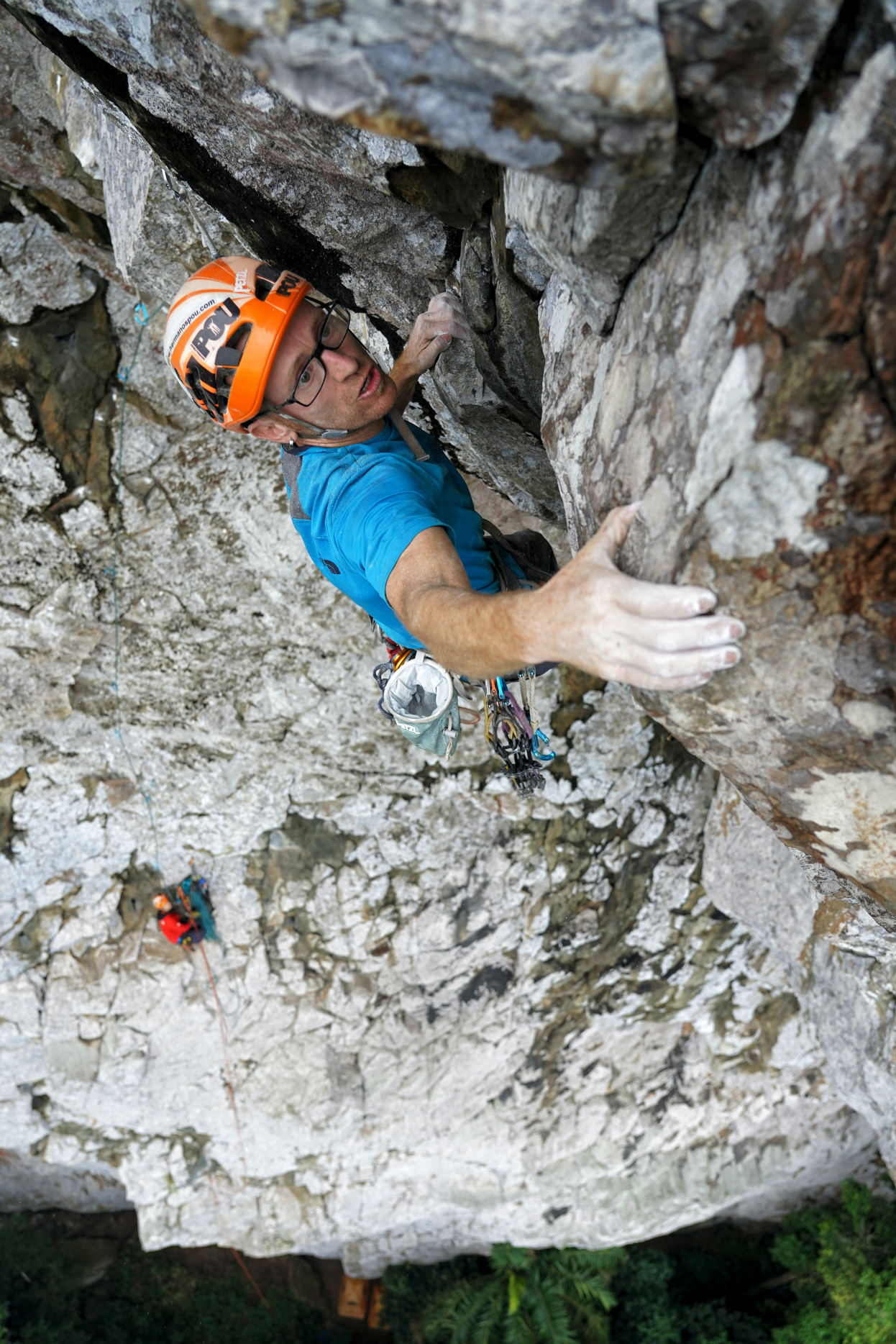Pico Cão Grande on:
[Wikipedia]
[Google]
[Amazon]
 The Pico Cão Grande (
The Pico Cão Grande (

 The Pico Cão Grande (
The Pico Cão Grande (Portuguese
Portuguese may refer to:
* anything of, from, or related to the country and nation of Portugal
** Portuguese cuisine, traditional foods
** Portuguese language, a Romance language
*** Portuguese dialects, variants of the Portuguese language
** Portu ...
for "Great Dog Peak") is a landmark needle-shaped volcanic plug
A volcanic plug, also called a volcanic neck or lava neck, is a volcanic object created when magma hardens within a vent on an active volcano. When present, a plug can cause an extreme build-up of high gas pressure if rising volatile-charged mag ...
peak in São Tomé and Príncipe
São Tomé and Príncipe (; pt, São Tomé e Príncipe (); English: " Saint Thomas and Prince"), officially the Democratic Republic of São Tomé and Príncipe ( pt, República Democrática de São Tomé e Príncipe), is a Portuguese-speaking i ...
, in the Caué District
Caué is a district of São Tomé and Príncipe, on São Tomé Island. Covering , it is the largest of the nation's seven districts in terms of area. In population it is the smallest, with 6,031 residents (2012).São Tomé Island
São Tomé Island, at , is the largest island of São Tomé and Príncipe and is home in May 2018 to about 193,380 or 96% of the nation's population. The island is divided into six districts. It is located 2 km (1¼ miles) north of the ...
in Parque Natural Obô de São Tomé
The Obô Natural Park of São Tomé ( pt, Parque Natural Obô de São Tomé) is a natural park of São Tomé and Príncipe, covering of the island of São Tomé Island, São Tomé. It was established in 2006, but yet to be assigned an IUCN protec ...
. Its summit is above sea level, and it rises about over the surrounding terrain. The volcanic plug was formed by magma solidifying in the vent of an active volcano. The nearest village is Vila Clotilde, 3 km to the east. The district seat São João dos Angolares
São João dos Angolares is a small town on the east coast of São Tomé Island in São Tomé and Príncipe. It is the seat of Caué District. Its population is 3,605 (2012).
is 9 km to the east.
Geology
The volcanic plug is quite a recent phenomenon, having formed as part of the Cameroon line ofvolcano
A volcano is a rupture in the crust of a planetary-mass object, such as Earth, that allows hot lava, volcanic ash, and gases to escape from a magma chamber below the surface.
On Earth, volcanoes are most often found where tectonic plates are ...
es roughly three and a half million years ago in the Pliocene
The Pliocene ( ; also Pleiocene) is the epoch in the geologic time scale that extends from 5.333 million to 2.58phonolite
Phonolite is an uncommon extrusive rock, of intermediate chemical composition between felsic and mafic, with texture ranging from aphanitic (fine-grained) to porphyritic (mixed fine- and coarse-grained). Phonolite is a variation of the igneous ...
(also called clinkstone in vernacular English).
Rock Climbing
The moss growing on the rocks due to high moisture content, and the presence of snakes, make climbing here very difficult. The first attempt to climb Pico Cão Grande was in 1975 by a Portuguese team of climbers, and the first successful climb was completed by a Japanese group of climbers in Feb 1991. Their names are Yosuke Takahashi, Kenichi Moriyama, Naotoshi Agata. In June 2016, Gareth Leah, from England, and Sergio Almada, from Mexico, established a new bolt-protected route on the peak. The pair spent four weeks on the peak producing a route which they named Nubivagant ("ascent into the clouds"). The route is 15 pitches (455 metres) in length and is graded F8b (5.13d). They climbed all but three pitches clean. The route is both extremely long and technically very demanding, and their climb was plagued with difficulties, including snakebites and blown battery chargers. The most difficult portions of the climb are in the first 100 meters, after which the difficulty drops considerably. In July 2018, the Spanish brothers Iker and Eneko Pou completed a multi-day teamredpoint
Redpoint ( gd, An Rubha Dearg) is a small settlement in the north west of Highland, Scotland. It takes its name from Red Point, a low promontory to the south, which marks a turn in the coastline from facing west to south east as it becomes Loc ...
ascent of a new route. They established the route ground up and without use of aid or removable bolts. The route is called Leve Leve and graded F8b+ (5.14a). They were also able to make the first all-free ascent of Nubivagant in team redpoint style over two days. This was followed two weeks later by another all-free ascent by a team of Americans, Sam Daulton and Remy Franklin.

References
External links
* {{DEFAULTSORT:Cao Grande Pico Mountains of São Tomé and Príncipe Caué District Volcanic plugs of Africa